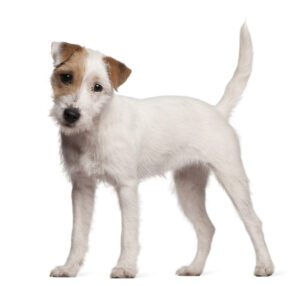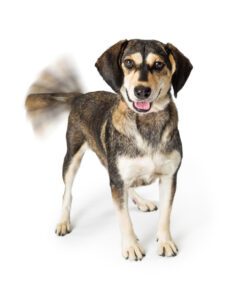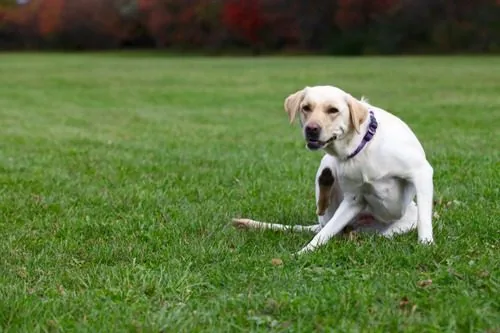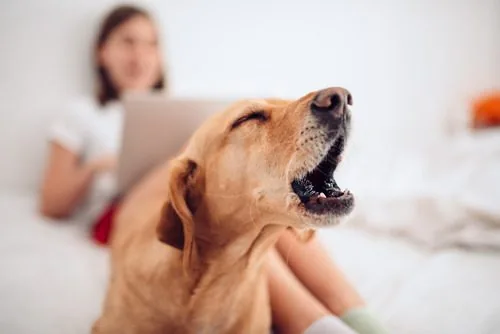The Body Language of Your Dog’s Tail
Dogs can convey their emotion through body language and rely on their body language for communication. Tail wagging is an integral part of non-verbal communication in dogs.
Your dog’s tail can communicate happiness, excitement, seriousness, or vulnerability. A wide range of emotions are involved in a dog’s world, and they can even share their feelings with other dogs via their tails. The direction of the dog’s tail also helps to know how they feel.
Nothing is more heartwarming than the mental image of a happy dog wagging their tail. Read on to learn further about the body language of your pup’s tail.

Why Do Dogs Wag Their Tails?
Canines use their tails to communicate with the world. They do not speak, so wagging their tail is their way of expressing themselves, as is their body language and facial expressions. The visual signals utilized reveal essential emotional information. Your dog’s tail also spreads their unique pheromones, which helps them communicate with other animals.
Interestingly, puppies will only wag their tails once they are about 30 to 50 days of age. Once they start to play and have fun, they start to wave their tails. It is a learned behavior from puppyhood. Dogs teach each other dogs how to communicate using their tails.
What The Body Language of Your Dog’s Tail Means
Pet parents need to pay attention to what their pup is saying even when they are not barking. The tail holds the key to helping us understand our dogs better. The tail can tell you what your dog thinks, feels, or communicates. The following includes some of the different messages your dog is conveying:
1) High Tail Full Body Wagging 
If your dog is giving you one of these tail wags, it indicates they are in a state of arousal. If you just came home from work, your pup may greet you with a high-tail wag, and their whole body may appear to be wagging, and they will likely have an adorable, goofy grin on their face. This means they are pawsitively elated about your homecoming. If you see this, your dog may feel:
- Excited
- Happy
- Friendly
- Welcoming
Typically, if your dog’s tail is happy, their tail may wag in a circle. It is described as “the helicopter wag.” The pup may also demonstrate a wiggling motion when this occurs. The more they wiggle as they wag their tail, the more positive their emotions are. They may also exhibit this tail wag when they know they are about to go for a walk or if they are about to play with you or another dog.
2) Fast and Slightly Curved
A dog that demonstrates a fast and slightly curved tail wag may be tense. The canine may also be about to strike. They may see a squirrel or a smaller creature they want to chase. This is suggestive of an alert dog ready for action.
3) Slow and Deliberate Wag
The pup may not be in the best of moods and does not want to interact, so proceed cautiously. Their face may also be down or straight ahead without that winning smile. This means that the dog most likely does not want to be approached. If you see this, your dog may feel:
- Upset
- Serious
- Pensive
- Unfriendly
Give them their breathing space if you see a dog demonstrating this body language. Consider that the dog may also not be feeling well. While it is not likely to be threatening or antagonistic, a slow or deliberate wag could spell trouble.
4) Tail Low Between the Legs
A tail low between the legs may indicate the dog’s fear or discomfort with a situation, person, or another dog. It could also be a show of submission from one dog to another, and the pup may feel threatened. If you see this, your dog may feel:
- Intimidated
- Vulnerable
- Anxious
- Afraid
When meeting a new person or pet, a pup may become nervous or anxious, and who can blame them? We have all felt at least a tinge of social anxiety at times. A dog may also feel intimidated if another dog is more dominant, aggressive, or more significant than them.
5) Tail Parallel to the Ground
A tail that is up in the air but parallel to the ground may signify that a dog is highly vigilant, especially if they are standing still and trying to listen. They may have heard a sound that made them feel apprehensive or seen something that made them curious.
A dog that is on high alert tends to hold a rigid or forward body posture. The canine’s mouth might be shut, their ears at attention, and their eyes wide open. They are focused on whatever happens to be holding their interest. During this time, their tail either be wagging or still.
6) Tail Lowered and Relaxed
With this tail wag, the dog is relaxed. This pup will typically be at ease with relaxed ears and mouth, a posture that is not stiff or tense, and shoulders that are loose. If you see this, your dog may feel:
- Calm
- Playful
- Spirited
- Comfortable
A dog that maintains this posture feels good. Their mouth may be slightly open or appear to be smiling. The pup will look more casual overall, and this pup is content and delighted to be living their life.
What About Tails that Go Left or Right?
The direction of the “tail” can tell the “tale.” Research has shown that when the tail wags to the right side, it is a positive response to something or someone, such as if they see their pet parent. However, wagging their tail to the left side is a negative response to something or someone, such as an unfamiliar dog.
Conclusion
The next time your dog wags their tail, pay close attention. A dog’s tail can communicate various messages, and they are trying to tell you something. They may be happy and excited or stressed and fearful. Whatever the case, your dog’s tail body language is a key part of how they communicate.
Are you a pet parent in the Atlanta, GA region? The Village Vets has 7 practices conveniently located across the Atlanta metro area. Find a location near you today!
Recent Posts
About The Village Vets
The Village Vets is a network of animal hospitals based in Atlanta, GA and the surrounding area. We offer honest, excellent service to our clients in a comfortable, friendly atmosphere. To learn more about our locations and how we can better serve you and your pet, click the button below.
Share This Post
Recent Posts
About The Village Vets
The Village Vets is a network of animal hospitals based in Atlanta, GA and the surrounding area. We offer honest, excellent service to our clients in a comfortable, friendly atmosphere. To learn more about our locations and how we can better serve you and your pet, click the button below.



